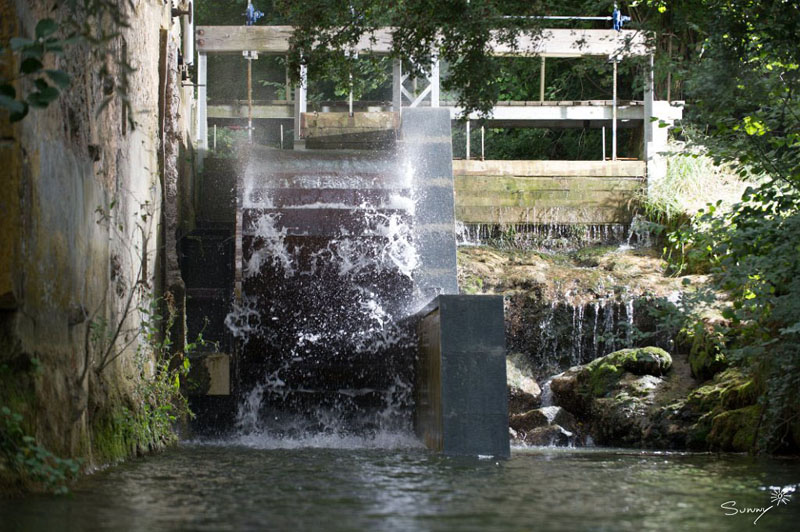OVERSHOT WATERWHEEL

An overshot water mill is characterized by a greater head (2 meters or more) and a smaller flow rate (usually less than 400 l/s). The water flows through a supply channel at the top of the mill. The buckets then fill up and the water flows away again at the bottom. At the bottom, the wheel always turns free from the tail water.
Due to the combination of head and flow rate, the electrical power is usually between 2 and 7 kW. In all cases, an industrial gearbox must be installed to increase the speed for the generator. The rotational speed and torque are average, which means that the costs for such a gearbox remain limited.
An overshot water wheel has a good efficiency since no water is lost once it is in the buckets The losses are limited to the entry and exit. When such a wheel really gets too much water, the efficiency decreases slightly, but the power continues to increase. If the wheel starts to run in the tail water, the efficiency decreases quickly and the power also decreases. This should be avoided under all circumstances. At a certain point a mill owner knows what the limit is. An automatic control can also take care of this.
Filling the buckets can be quite noisy as the air must be able to escape. When the buckets are emptied, the water falls freely onto the tail water surface. The sound is less than that of a waterfall, but still significant. It is not a problem in a well insulated house or a separate building, but it must be taken into account right next to a living space. Often this type of waterwheel is dictated by the physical or historical circumstances and then there is no choice.
The projects below have been carried out by Gratia Hydro. The considerations for the choices have been described for each project.